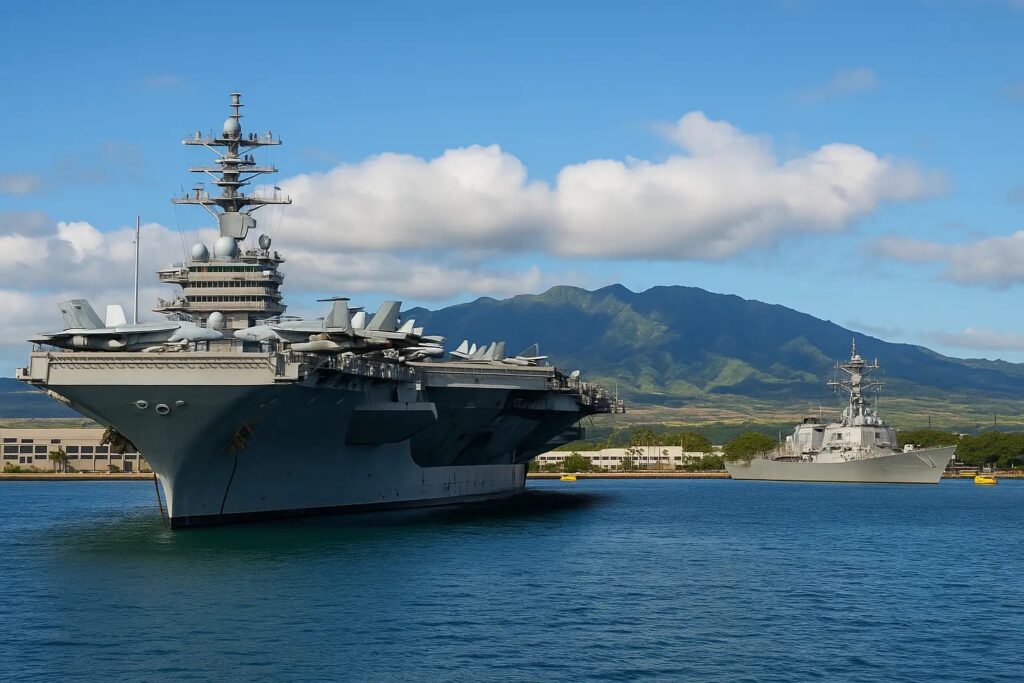US Navy Bases: The Beating Heart of Naval Power
When you think of the U.S. Navy, you might picture warships slicing through waves, aircraft launching from carriers, or elite sailors patrolling the seas. But the foundation of this global force doesn’t float—it stands anchored on land, across continents, in the form of powerful and strategic U.S. Navy bases.
These installations are more than just military outposts. They are lifelines of readiness, symbols of deterrence, and homes to thousands of sailors and their families. From the Pacific Rim to the Middle East, each Navy base carries a distinct mission, yet all pulse with the same commitment: to defend, respond, and dominate when called upon.
Hubs of Strength: What Makes a Navy Base Critical?
More Than Just a Base
A U.S. Navy base is a fortified ecosystem—housing not only military equipment and personnel, but also medical centers, airstrips, repair facilities, schools, and entire neighborhoods. Some are logistical powerhouses. Others serve as launch points for naval warfare or humanitarian missions. All of them operate like a city within a city, running 24/7.
Strategic Geography Is No Accident
The Navy doesn’t place its bases randomly. Every location—whether nestled in Hawaii, stationed in Japan, or spread across the East Coast—is chosen for its geopolitical importance. These bases are America’s forward-deployed guardians, positioned to strike, support, or stabilize on a moment’s notice.
Most Influential US Navy Bases
Naval Station Norfolk (Virginia)
The crown jewel of U.S. naval installations, Norfolk is the largest Navy base in the world. With over 75 ships, 130 aircraft, and 14 piers, it’s a supercharged center of Atlantic operations. From here, American power can surge into Europe, the Arctic, or deep into the Caribbean.
Fleet Activities Yokosuka (Japan)
This critical hub in the western Pacific is home to the Seventh Fleet, one of the most active naval forces on the planet. Yokosuka is not just a base—it’s a message to adversaries in Asia: the U.S. Navy is watching and ready.
Pearl Harbor-Hickam (Hawaii)
Synonymous with history and sacrifice, Pearl Harbor today is a launchpad for Pacific strategy. Jointly used by the Navy and Air Force, it connects the West Coast to missions across the Indo-Pacific region.
Naval Support Activity Bahrain
In the heat of the Middle East, NSA Bahrain is a lifeline for operations in the Persian Gulf. It’s the nerve center of U.S. naval presence in the most volatile waters in the world—close to Iran, guarding vital oil lanes.
Naval Air Station Lemoore (California)
Home to the Navy’s jet strike fighters, Lemoore controls air dominance on the western front. As China flexes its military might, this inland base plays a quiet but decisive role in aerial preparedness.
Hidden Giants: Lesser-Known but Vital Navy Bases
Not all Navy bases get the spotlight, but many perform roles just as crucial.
Naval Base Kitsap (Washington State)
Housing submarines and a massive strategic weapons facility, Kitsap is the Navy’s underwater stronghold. It’s where stealth meets firepower.
Portsmouth Naval Shipyard (Maine)
This centuries-old base specializes in submarine repairs, ensuring America’s undersea warriors stay ready and deadly.
Naval Base San Diego (California)
Often called the West Coast’s Norfolk, this base houses over 50 ships and plays a central role in Pacific operations and fleet maintenance.
US Navy Bases Abroad: America’s Forward Shields
The U.S. Navy operates around the world not out of ambition—but necessity. In a world riddled with instability, forward-deployed bases allow rapid responses, show strength to allies, and deter hostile nations before conflict ever erupts.
Why Overseas Bases Matter
- Proximity to Hot Zones: Whether in Japan, Bahrain, Spain, or Guam, these bases are just hours away from flashpoints—ready to intercept threats before they reach American shores.
- Support for Allies: Bases double as training grounds and logistics hubs for joint operations with allies like Japan, NATO nations, and Gulf states.
- Peace Through Presence: Simply put, U.S. naval bases abroad signal to rivals that any aggression will be met with immediate resistance.
Life Inside a Navy Base: Humanity Beneath the Uniform
Behind the barbed wire, security gates, and runways, life on a Navy base often mirrors civilian life. Kids ride school buses. Families shop at commissaries. Couples walk along piers during sunset.
But there’s always an edge—a sense of alertness. Sailors train relentlessly. Warships are maintained with precision. Families live with the knowledge that deployments can come anytime, and danger is never far away.
For many, these bases are home—just with a constant reminder that peace is protected, not promised.
Navy Bases and Global Conflicts: Silent Players, Loud Impact
When crises erupt—whether in Ukraine, Taiwan, or the Red Sea—Navy bases quickly pivot from calm to combat mode.
- Evacuations: In times of war or disaster, naval bases become lifelines for evacuating citizens or delivering humanitarian aid.
- Strike Operations: Carrier strike groups deploy from bases in minutes, and submarines vanish silently from docks with unseen missions.
- Cyber and Intelligence Hubs: Modern warfare isn’t just about ships and jets. Navy bases are centers of electronic surveillance, intelligence gathering, and cyber-defense.
US Navy Bases in the Age of New Threats
In 2025 and beyond, the challenges aren’t just conventional. Hypersonic weapons, drone swarms, satellite jamming, and cyberattacks are changing how bases must defend themselves and operate.
The Navy is responding. Bases are being upgraded with:
- Hardened infrastructure to withstand missile strikes.
- AI-driven security systems for surveillance and threat detection.
- Energy independence, using solar and microgrids to stay operational even if grids fail.
Bases aren’t static—they evolve, staying one step ahead of the enemy.
Why These Bases Still Matter More Than Ever
In a time of growing global tension—whether from Russian aggression, Chinese expansion, or Middle Eastern instability—the importance of U.S. Navy bases has never been more profound.
They are not symbols of war. They are the infrastructure of peace, the architecture of deterrence. They are where missions begin, where allies gather, and where the future of freedom is silently protected.

